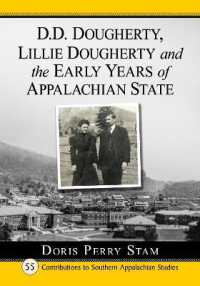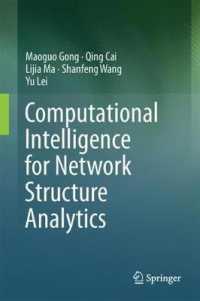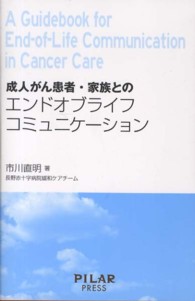- ホーム
- > 洋書
- > 英文書
- > Nature / Ecology
Full Description
Paleodemography is the field of enquiry that attempts to identify demographic parameters from past populations (usually skeletal samples) derived from archaeological contexts, and then to make interpretations regarding the health and well-being of those populations. However, paleodemographic theory relies on several assumptions that cannot easily be validated by the researcher, and if incorrect, can lead to large errors or biases. In this book, physical anthropologists, mathematical demographers and statisticians tackle these methodological issues for reconstructing demographic structure for skeletal samples. Topics discussed include how skeletal morphology is linked to chronological age, assessment of age from the skeleton, demographic models of mortality and their interpretation, and biostatistical approaches to age structure estimation from archaeological samples. This work will be of immense importance to anyone interested in paleodemography, including biological and physical anthropologists, demographers, geographers, evolutionary biologists and statisticians.
Contents
1. The Rostock Manifesto for paleodemography: the way from stage to age Robert D. Hoppa and James W. Vaupel; 2. Paleodemography: looking back and thinking ahead Robert D. Hoppa; 3. Reference samples: the first step in linking biology and age in the human skeleton Bethany M. Usher; 4. Aging through the ages: historical perspectives on age-indicator methods Ariane Kemkes-Grottenthaler; 5. Transition analysis: a new method for estimating age-indicator methods Jesper L. Boldsen, George R. Milner, Lyle W. Konigsberg and James W. Wood; 6. Age estimation by tooth cementum annulation - perspectives of a new validation study Ursula Wittwer-Backofen and H. Buba; 7. Mortality models for paleodemography James W. Wood, Darryl J. Holman, Kathleen A. O'Connor and Rebecca J. Ferrell; 8. Linking age-at-death distributions and ancient population dynamics: a case study Richard R. Paine and Jesper L. Boldsen; 9. A solution to the problem of obtaining a mortality schedule for paleodemographic data Bradley Love and Hans-Georg Müller; 10. Estimating age-at-death distributions from skeletal samples: a multivariate latent trait approach Darryl J. Holman, James W. Wood and Kathleen A. O'Connor; 11. Markov Chain Monte Carlo estimation of hazard model parameters in paleodemography Lyle W. Konigsberg and Nicholas P. Herrmann; 12. A re-examination of the age-at-death distribution of Indian Knoll Nicholas P. Herrmann and Lyle W. Konigsberg.








